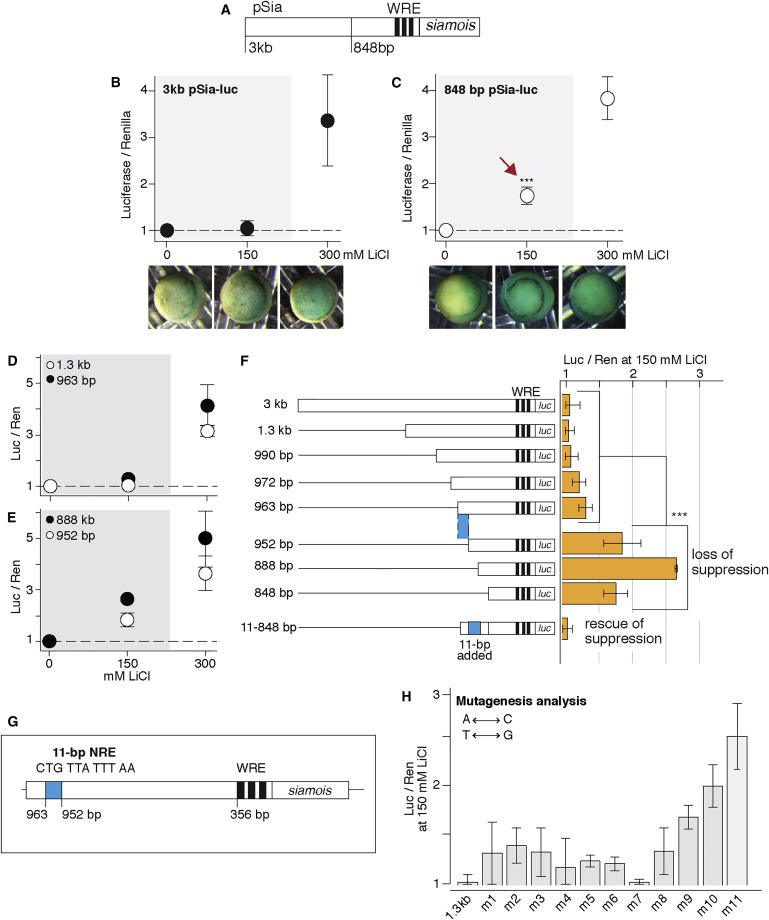XB-IMG-158331
Xenbase Image ID: 158331

|
Figure 2
A Suppressive 11-bp NRE Is Necessary for siamois Regulation
(A) Three WREs (black) are located within 500 bp upstream in siamois promoter (pSia)
(B–F and H) We built luciferase reporters using 3-kb and 848-bp pSia. The luciferase reporters were injected into each cell at the four-cell stage. Injected embryos were treated with lithium for 5 min at the 32-cell stage and harvested for dual-luciferase assay at stage 10. As an injection control, pRL-TK constitutively expressing renilla luciferase was co-injected, and the pSia-driven firefly luciferase signal was measured relative to the renilla luciferase signal. In all of the plots shown here, the luciferase/renilla signal is normalized to that in the control, untreated embryos. Data are presented as mean ± SEM from three to five biological replicates. Error bars not visible have negligible SEM.
(B) Expression of 3-kb pSia-luc.
(C) Expression of 848-bp pSia-luc (p value = 8.4e−4, Student’s t test).
Insets below (B) and (C): Xenopus embryos were injected with 3-kb or 848-bp pSia-LacZ at the four-cell stage, treated with lithium for 5 min at the 32-cell stage, and fixed at stage 10 for X-Gal staining. In all embryos, dorsal is to the right.
(D) Expression of 1.3-kb pSia-luc (black) and 963-bp pSia-luc (white).
(E) Expression of 952-bp pSia-luc (white) and 888-bp pSia-luc (black).
(F) Expression of pSia of various lengths in embryos treated with 150 mM LiCl (p value = 1.5e−5, Student’s t test). See also Figure S1.
(G) A suppressive 11-bp NRE (blue) is located between 963 and 952 bp upstream of siamois.
(H) Mutagenesis analysis of the 11-bp NRE. Data are mean luciferase/renilla signal ± SEM from two to four biological replicates. Image published in: Kim K et al. (2017) Copyright © 2017. Image reproduced with permission of the Publisher, Elsevier B. V. Larger Image Printer Friendly View |
